Insulation, vapor retarder, and air barrier for floor layout of tinyhouse on trailer? VT
Hi everyone, thank you for all of the fantastic and interesting content.
I have a bit of a silly redundant question. I am trying to build a mold resistant dwelling “tinyhouse” on a steel trailer. Climate zone 6, Vermont. I know this has been answered here:
https://www.greenbuildingadvisor.com/question/how-can-i-insulate-an-exposed-flooring-system-properly
https://www.greenbuildingadvisor.com/article/foam-free-insulated-foundations#comment-220767
and the 2020 Update:
Alas, as I will only trust this assembly once I build it, and see it fail for other reasons. I must ask for opinions.
In an open vented crawlspace, (which is more or less how I imagine the area beneath my trailer) Dr. Joe recommends fluffy insulation between the floor joists, covered by foil faced polyiso, air sealed and taped, covered by a critter shield.
I love it, but I am afraid of vapor impermeable layers. Vermont is hot in the summer, cold in the winter, and humid year round. Tiny-houses are also much more humid than Large-houses. Monitoring our current tiny living quarters, I think that 55-60% humidity is going to be likely indoors.
So, the vapor impermeable foil faced polyiso worries me for winter drying purposes. Might I rather use an EPS foam and smart vapor membrane on the exterior?
Still, I trust Joe’s advice and certainly have seen how much humidity and condensation there can be under a damp crawlspace or hot utility trailer on a July day. An impermeable layer beneath the floor joists seems smart.
I have never been a warm water vapor molecule in the summer, but I think that they work very hard to rise upwards into trailer subfloors.
So, I would like to use the foil faced insulation, but my fear is that in the winter I will lock water in the subfloor. The vapor drive may be from the warm living quarters outward, to the cold joists. (Can it migrate..down? Is that even a possible direction? From the warm living quarters)
So finally, if possible I would like to build the subfloor for the house without any vapor impermeable foil surfaces. Ideally using this layup:
:interior human space:
– T&G pine floor
– Siga Majrex membrane layed on joists
– 2″x8″ joists stuffed with fiberglass/mineral wool
– Proclima Mentos 1000, stapled beneath joists
– 1.5″ EPS foam board
– Hardware cloth and fine mesh screen rodent guard
:air gap of 24″ beneath trailer to forever damp soil:
It seems that this layup will insulate the joists, and still breath a bit.
My question is: Will the summer vapor diffusion upwards into the cool joists (I loftily intend to have an AC mini-split) be greater that the Mentos 1000 and EPS can stop?
I ask, because the Mentos 1000 is vapor open (assumingly both directions).
I should add the structure layout:
The structure is very simple,
– longitudinal, two steel 3″x5″x26′ steel box tubes at 80″ OC.
– 2″x3″ steel C channel crossmembers 16 OC recessed 2″ from top of box beams and welded between the box beams.
– 2″x8″x10′ SPF joists 16 OC, perpendicular to the box beams. bolted every 5th joist with Simpson holddowns.
– Any insulation or vapor membrane would be taped to the steel framing from below, scraps of torchdown roofing used as break between steel frame and wood joists.
Thank you all very much.
I am sorry for my likely misuse of building science terms.
Like all of us, I have repaired too many rotted floors and walls to take this lightly.
PS: I also attached a simulated floor layup from “Ubakus,” I am new to this program and I don’t trust it in my hands:
– Image 1: Winter, It warns against the foil faced polyiso in winter temps.
– Image 2: Winter, Swapping the polyiso for Mentos 1000 satisfies the program.
– Image 3: Summertime, it likes the foil faced polyiso.
– Image 4: Summertime, it warns against using Mentos 1000 without foil faced polyiso.
-Image 5: It likes the semi permeable EPS and Mentos 1000 instead of foil faced polyiso.
– – Bottom line — I still dont trust it. I think that the summer vapor will migrate up into the floor.
GBA Detail Library
A collection of one thousand construction details organized by climate and house part


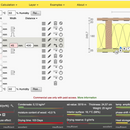
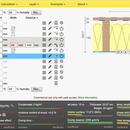
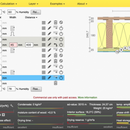
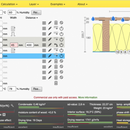
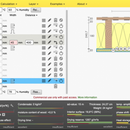







Replies
Charlie,
This question comes up fairly regularly on GBA. You may find these past discussions useful:
https://www.greenbuildingadvisor.com/question/floor-insulation-for-a-tiny-house-on-wheels
https://www.greenbuildingadvisor.com/question/tiny-home-subfloor-flashing-seal-or-not
https://www.greenbuildingadvisor.com/question/tiny-house-subfloor
https://www.greenbuildingadvisor.com/question/tiny-home-subfloor-proper-layers-for-long-lasting-system
https://www.greenbuildingadvisor.com/question/moisture-management-for-tiny-house-subfloor
Thanks Malcolm, I thought I had found everything but only read half of those previous threads.
Charlie,
GBA's search function is terrible. You are much better off using Google.
some of what was discussed there used a metal frame and the thermal bridging there. For a wooden frame you have to rethink the advice given..
Ubakus gives you hints - tendencies - whether a certain condensation or drying time is acceptable - at the end it's your call. You can avoid obvious mistakes which is 80% of the game. Whether that structure is space efficient and buildable is another story
I would also set the test conditions a bit more closer to reality. Nice fresh air inside in the summer is nice, but even for me, 18C seems way on the cold side. If you bump up the interior temp a bit to something more reasonable, you won't have condensation issues with most assemblies with exterior rigid.
As long as you have a continuous layer of taped rigid under your joists and avoid non permeable interior finishes, you won't have issues.
The big issue with these tiny house on steel trailers is thermal bridging especially around the wheels. Make sure there is a layer of rigid or SPF between any of the steel structure and your floors/walls.
Thanks Akos, Bas, and Malcolm
Great points.
I am putting the rigid foam around the wheel well steel areas tomorrow!
I also used that high-ish density pvc 1x4 material as shimming beneath other steel members. Not perfect, but hey its in there.